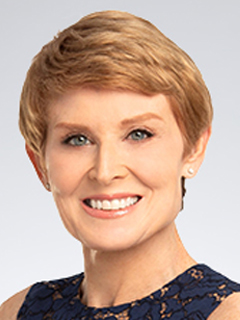
Economic Compass
Dog days of summer: Tariffs start to bite
How tariffs act on the economy.
August 7, 2025
Every year, we slip into what are known as the “dog days of summer,” or the hottest and most uncomfortable days of July and August. The name derives from ancient Greek and Roman astronomy. It refers to the period when Sirius, the brightest star in the constellation Canis Major (the “Greater Dog”), rises before the sun.
The Romans referred to the star’s emergence as “dies canicularems” or “days of the dog star,” which later became “dog days.” They believed its proximity to the sun triggered the hottest and most unbearable days of the year, which were associated with droughts, lethargy and a general sense of chaos or unpredictability.
That seems an apt place to start, given another round of tariffs. Just as the Romans believed that the star Sirius triggered oppressive heat and chaos, tariffs are now fueling inflation, causing lethargy in the labor market and further sowing the seeds of uncertainty.
The personal consumption expenditures (PCE) index, the Federal Reserve’s favored measure of inflation, accelerated in May and June, moving further above instead of toward the Fed’s 2% target. The prices of the most tariff-sensitive goods jumped at their fastest annual pace since December 2022.
Payroll employment rose by an anemic 85,000 jobs per month in the first seven months of the year, less than half the pace of 2024. We are now within the margin of error for no job gains in 2025.
The unemployment rate edged up only modestly to 4.2% in July from 4.1% in June. That is close to an historic low and where it has been for more than a year. The demand and supply of workers have decelerated at the same pace, which is helping to keep the labor market in balance.
The question is whether it can stay there. The household survey, which is not subject to the revisions of the payroll survey, revealed that the duration of unemployment rose along with the ranks of the unemployed in July.
The long-term unemployed (27 weeks or more) jumped as a share of the labor force, which usually occurs after the economy has entered a recession. The stress measure of unemployment, which includes discouraged workers, jumped to 7.9% in July, well above the 6.2% pace of 2019. Could we already be in a recession?
This edition of Economic Compass takes a closer look at where we are in the rollout of tariffs, how long before the full effects kick in and how other policy shifts are likely to interact with tariffs. Headwinds are building for the remaining two quarters of the year.
Prospects for 2026 are better, aided by expansions to tax cuts and rate cuts by the Federal Reserve. We now expect two rate cuts prior to the end of the year, with a lot more in 2026. Rates could now drop well below the 2.75% to 3% range that is considered neutral.
Peak tariffs
A moving target
Chart 1 shows our estimate of the change in the effective tariff rate between now and the end of 2027. The effective tariff rate now peaks at 16.5%, which takes into account an additional 1.5 percentage points in cost savings due to use of Foreign Trade Zones (FTZs).
That is in addition to exemptions to current tariffs, import substitution, potential waivers and the massive stockpiling we saw ahead of tariffs. Many goods in inventory still reflect the costs before tariffs hit. The runway on those shifts is getting shorter.
Smuggling and bribes are common in high-tariff regimes. That has prompted increased spending on tariff enforcement, which is adding to red tape at the border. Protectionism requires more government oversight and runs counter to efforts by the administration to deregulate.
Our current tariff calculations assume that recent tariffs stay in place, but risks are to the upside. The threat to levy 100% tariffs on semiconductors could easily push the peak tariff rate above 20%, but proposed carved outs for large tech players ameliorate much of those costs. The administration is trying to clamp down on transshipments: cargo that is transferred from one vessel to another before it reaches the US.
The concern is that importers may use low-tariffed countries to receive goods from high-tariffed countries without paying the full tariffs. There is little detail on how they plan to define transshipments. It is already illegal to bring in a good from China, and say it is from Vietnam. Our own analysis suggests that losses due to such shipments are smaller than many believe.
Tariffs are still the president’s favored weapon and serve a multitude of purposes, some of them conflicting. The most recent tariffs on Brazil and India are good examples. Tariffs on Brazil surged to 50% to pressure the government to intervene in the trial of its former president. Tariffs on India keep escalating to punish it for its reliance on Russian oil.
Those shifts are prior to correcting other distortions. New tariffs on goods from the European Union (EU), Japan and South Korea have left them with an advantage over US vehicle producers. That is the exact opposite of the administration’s stated goal and could accelerate offshoring if not rectified.
The good news is that effective tariff rates tend to ease after peaking due to a broad array of mitigation efforts. We saw a similar drop following the peak in the wake of the Smoot-Hawley tariffs of 1930.
Separately, the administration is facing legal challenges to tariffs from a conservative small business group. The lawsuits argue that the president cannot use emergency powers to justify tariffs. The administration has already said it could leverage other tariff laws to keep the levies in place, if the courts rule against them.
Chart 1: Tariffs peak at highest level since the Great Depression
Effective tariff rate, percent
Tariff effects
A timeline
The move up in the May and June inflation data and a surge in warnings about tariff-related price hikes suggest we are at a tipping point. We have moved from worrying about the dog days of summer to living them.
There are significant lags between when tariffs go into effect and how and when they show up in the economy:
- The time between ordering and receiving an import – four to nine weeks. The first tariffs were levied in February but did not show up as a boost to revenues until April. Even then, the revenues were still low. Goods “on the water” or en route to the US prior to the announcements received waivers. That is in addition to front-running and the use of FTZs, which further delayed and dampened the boost to prices.
- Pass-through to prices – two to six months. Research on the 2018-19 trade war revealed that US firms and consumers bore all the costs of tariffs. The pass-through was rapid. Prices rose within months. Current tariffs are significantly larger, which suggests more cost sharing. Large companies have the leverage to gain concessions from suppliers; small firms do not. Those shifts and yet another round of tariffs suggest prices and costs will accelerate as we get into the final months of the year.
- Supply chain shifts – six to 18 months. Firms tend to mitigate the effects of tariffs by reorganizing supply chains. That is costly and takes time. Gains in employment in the most protected industries are more than offset by losses in those without tariff protections; the latter tend to get hammered by higher input costs and the retaliation trade wars tend to trigger.
- Losses to productivity and investment – one to three years. Five decades of data on 150 countries reveal that tariffs dampen investment and undermine productivity growth. Those effects take years to play out and diminish the economy’s potential to grow.
The AI boom is moving into bubble territory and could provide some offset to those losses, although tariffs increase the costs of building data centers. Full expensing of equipment in the tax bill may lower some costs, but not all.
Investment outside of AI has been lackluster. Persistently higher interest rates and a surge in policy uncertainty are the main reasons. Households and firms tend to delay big spending decisions, including hiring, when uncertainty spikes.
Those effects can linger, which compounds the blow to investment and productivity growth. That leaves the economy more brittle and susceptible to bouts of inflation.
Inflation fallout
It’s about to get hot
Chart 2 shows the forecast for inflation. The core PCE index, which excludes food and energy, is forecast to peak at 3.4% in the fourth quarter. That is above the Fed’s 2% target and will persist well into 2026:
- Inflation has been above the Fed’s 2% target for more than four years, which increases the risk of it reigniting.
- Tariffs are typically considered a one-time adjustment in price levels, which quickly dissipates. That assumes that tariffs occur once, not sequentially, as we are currently seeing.
- Prices have started to accelerate, with the bulk of those effects still ahead of us.
- Aging demographics and curbs on immigration have reduced the supply of workers, which raises the risk of a wage-price spiral as the economy rebounds in 2026.
What is the case against such an outcome? The margin for error in the labor market has narrowed; it would not take much to push the monthly employment numbers into the red. Once that starts, it can prove tough to stop.
Chart 2: Inflation lingers for longer
Core PCE, year-over-year percent change
A conundrum for the Fed
Dissents up ante on cuts
Chart 3 shows the forecast for the federal funds rate. We now expect two cuts prior to the end of the year. September is not a slam dunk:
- The Fed’s credibility is at stake, as it never fully derailed the post-pandemic inflation. Political pressure to cut rates adds insult to injury.
- The Fed is still paying the price on its call that inflation would be transitory post-pandemic.
- The New York Fed’s survey on tariffs shows that firms expect to pass on a good portion of tariff costs.
- Spillover effects in the service sector cannot be ruled out.
- The unemployment rate is still historically low.
We are getting closer to a rate cut. Governors Christopher Waller and Michelle Bowman dissented in July, calling for a quarter-point cut. Concern about the labor market was the main reason.
New York Fed President John Williams, who is close to Powell in his views, is open to a modest calibration in rates. Two cuts before year-end would leave monetary policy in restrictive territory, while cushioning the economy from a slowdown in employment.
The pace of rate cuts will no doubt accelerate in 2026. Governor Adriana Kugler resigned early, leaving a seat open for the president to fill. He will appoint a loyalist. Congress is out for recess and will not take up that nomination before it returns in September. It is unlikely that a new member will be sworn in by the September 16-17 Fed meeting.
Once that person is in place, Powell could face three dissents among the Board of Governors if the Fed does not cut. That is unusual for the Fed. Former Fed Chairman Paul Volcker suffered a series of setbacks with his colleagues on the Board of Governors. He resigned not long after three voted against him in 1987.
We now expect the Fed to cut rates seven times in 2026. A modest uptick in unemployment will be the primary reason. When combined with the two cuts in late 2025, that will lower the fed funds rate to a 2% to 2.25% range, which is well below current estimates of neutral.
Chart 3: Fed expected to cut more in 2026
Federal funds rate, upper bound
Bond market jitters
Could cuts eventually backfire?
Investors have fled the safety of Treasuries. Rates have risen instead of fallen during recent bouts of uncertainty. That has raised concerns about the “safe haven” status of our bonds, which enabled us to issue debt at a low cost.
Foreign investors, who have suffered the blow to demand triggered by tariffs, are looking for ways to diversify their portfolios. They are swapping Treasuries for gold bullion and other “safe” assets. The German bund is another beneficiary.
Europe is weighing the issuance of a Eurobond to fund defense outlays and its green transition. Such a move could further undermine demand for Treasuries and the dollar and move more funds abroad. Threats to the Fed’s independence and deficit-financed tax cuts are exacerbating those shifts.
Investors in our bonds are requiring higher rates to compensate them for the perceived risks of holding bonds due to higher inflation and potential problems servicing our debt. Another jump in long-term bond yields cannot be ruled out.
Bottom Line

We are entering an economic equivalent of the dog days of summer, when the oppressive heat of inflation threatens to return, as the job market stagnates. That is a toxic mix for the Fed, which is looking to balance the risks of escalating inflation and rising unemployment.
The uncertainty that hangs over the economy is like the heavy weight in the air as a summer storm approaches. Will inflation peak quickly or persist? Will the labor market remain balanced, or tip us into recession? How much can the Fed cut rates without risking a more prolonged bout of inflation?
If the Fed does cut more aggressively, what happens to its credibility and ability to stem inflation down the road? For now, the Fed sits on the fence, reluctantly waiting for more data as the star Sirius burns at its brightest. The heat and chaos associated with its appearance could bring the economy to a standstill.
Prospects for 2026 are better. Until then, drink lots of water, stay in the shade, dip your toes in the kiddie pool and if you have it in you, hug an economist. The dog days of summer are taking a toll on our collective moods. Be kind; pay it forward.
Underlying growth is slowing
Real GDP growth soared at a 3% annualized pace in the second quarter, which in many ways was a mirror reflection of the first quarter. Those who could bought ahead of tariffs and stockpiled goods. That led to a halt in imports and an abrupt narrowing of the trade deficit in the second quarter.
Consumer spending remained subdued, while the housing market and business investment lost ground. Final sales to private domestic purchasers slowed to a 1.2% pace in the second quarter, after rising 1.9% in the first. That compares to more than 3% in the second half of 2024.
Government spending barely budged. A drop in federal outlays, led by defense, was only partially offset by an increase in spending at the state and local levels. The ripple effects of earlier cuts in federal workers, contractors, nonprofits, grants, spending on education and research are headwinds going forward. Entire ecosystems are being disrupted.
Underlying economic conditions are poised to get worse before they get better. Real GDP is forecast to rise only 0.2% in the third quarter. Tariffs and the uncertainty they cause are costly. Escalating prices erode purchasing power and take a toll on consumer spending and home buying. Business investment contracts, except for data centers. Inventories are liquidated. The trade deficit treads water. Government spending moderates with earlier cuts showing up as a drag on spending.
The fourth quarter is only marginally better with real GDP expected to rise at a 0.8% annualized pace. That leaves us with almost no growth in the second half of 2025. Easier monetary policy and an expansion to tax cuts are expected to spur a stronger 2026.
The Fed preps for rate cuts. Chairman Jay Powell could open the door to rate cuts at his Jackson Hole Symposium keynote in a couple of weeks. We do not expect a firm commitment given the uncertainty surrounding both inflation and employment, but the Fed’s leadership is clearly warming to the notion of rate cuts. Most of the Fed would like to see at least two cuts by year-end.
Economic Forecast — August 2025
Dive into our thinking:
Explore more

Insights from the Emerald Isle: On tour with economists abroad
Other economies are strengthening trade ties between them, leaving the US behind.

KPMG Economics
A source for unbiased economic intelligence to help improve strategic decision-making.

Tariffs effects spotty in June CPI
We are sticking to our forecast for one cut in December.
Subscribe to insights from KPMG Economics
KPMG Economics distributes a wide selection of insight and analysis to help businesses make informed decisions.
Meet our team
